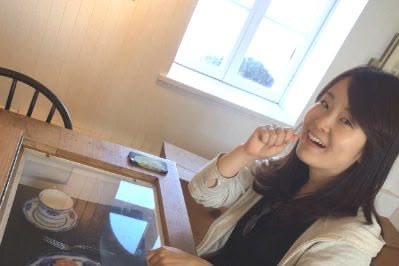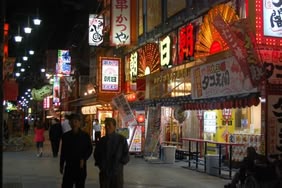In questa pagina ti forniremo alcune informazioni sul sistema di scrittura giapponese che, come vedrai di seguito, è molto diverso da quello italiano. Continua a leggere per capire come è strutturata la lingua giapponese, quali sono le sue caratteristiche, come funziona l’alfabeto e da quanti caratteri è composto, cosa sono i kanji, lo hiragana e il katakana. In più, alla fine di questa pagina troverai la traduzione in italiano dei caratteri giapponesi.
Japanese alphabet: Characteristics and things to know

According to a recent study by Ethnologue, which is the leading reference for global language data, Japanese is spoken by more than 125 million people worldwide nowadays. It is a language studied for a variety of reasons, whether by fans of the world of otaku and Japanese culture or by language lovers, and by all those who wish to attain a high language level to broaden their cultural background or for work purposes.
Learning a new language can be a very daunting task, whether one decides to take courses with qualified teachers or to proceed with self-taught learning. This is even more true if we are talking about a language that is totally different from our own, which uses a different writing system than the one we are used to. The Japanese language is a complex language for us Italians because it includes different types of characters that are chosen to compose words based on various parameters, and there is no exact correspondence between sign and letter.
In addition, Japanese includes many dialects and three different courtesy formulas, namely informal, formal, and very formal. You must also remember that you will have to write from top to bottom and from right to left. The alphabet to be used, or rather, the set of characters that form words, includes symbols that represent syllables and not single letters, except for vowels. In the next section we will give you some useful information about these characters that make up the three main Japanese writing systems, namely hiragana, katakana, and kanji.
Complete Japanese alphabet: How is it composed?
The alphabet in Japanese consists of 3 different writing systems, namely hiragana, katakana, and kanji. Usually the study of this language begins with hiragana, even as far as the Japanese school system itself is concerned. The characters that make up the hiragana alphabet are those used primarily for Japanese words, and so these are the symbols most commonly used on a daily basis. Japanese children begin studying hiragana in elementary school and form words using the 46 characters that make it up.
Katakana, on the other hand, is mostly used for words of foreign origin. One of the first exercises that language teachers assign to students is to write their own name, which must be composed precisely using katakana symbols. Likewise, the names of foreign cities or other countries will also be written using this alphabet, as well as onomatopoeic words. The katakana alphabet consists of 46 characters, just like hiragana.
Finally, the Japanese writing system includes kanji. Kanji are logograms that are used to write nouns, verbs, adjectives, and person's first and last names. Kanji are derived from Chinese and represent concepts or even whole words, and there are over 50,000 of them. However, to read most words in Japanese you only need to know the 2,000 or 3,000 most common and widespread ones. They are divided into pictograms, ideograms, semantic compounds, semantic-phonetic compounds, derived characters and lent kanji.
Finally, there is another alphabet, called romaji, which takes the Latin letters. This alphabet was created in the 16th century, when the Jesuits had to adapt Japanese to Portuguese orthography for religious issues, and today it is used mainly in street signs, dictionaries, textbooks, and on some store and club signs. Further down, again within this page, you will find the complete Japanese alphabet in Italian, with the characters and their respective translations of the syllables.
How to study the Japanese alphabet

The complete Japanese alphabet, therefore, actually comprises three quite distinct alphabets. As for the characters of hiragana and katakana, each corresponds to a syllable (such as mi, ne, ru, wo, pi, and so on), while the only letters that exist individually are the vowels: a, e, i, o, u. Keep in mind that you will have to learn to write kana, or the characters of the two Japanese syllabaries, respecting a specific order. There is in fact a certain order in which to write the various strokes of the alphabet characters, so it will be good to get yourself a table or infographic that shows this in detail, line by line.
Kanji, as we have seen, number in the thousands. To help your brain memorize them you can associate them with something you know, such as an object or an animal. This will make it easier for you to remember how to spell a particular symbol. Once you have mastered the various characters of the alphabet, then you can think about sound. If you are an anime fan, help yourself by watching your favorite episodes in the original language to better assimilate pronunciation and intonation. Take your time and above all organize your work, otherwise you will end up getting discouraged and giving up studying.
Online
Language courses
Learn foreign languages effectively and in the comfort of your own home with real teachers!
Get a 5% loyalty discount on your next language study trip!
Japanese alphabet translated into English
In this section you will find the Japanese alphabet translated into English, that is, all the kana (hiragana and katakana) with their translation. Learn the syllables in Japanese and start forming words!
Hiragana and Pure Syllables
A - あ
Ka - か
Sa - さ
Ta - た
Na - な
Ha - は
Ma - ま
Ya - や
Ra - ら
Wa - わ
I - い
Ki - き
Shi - し
Chi - ち
Ni - に
Hi - ひ
Mi - み
Ri - り
U - う
Ku - く
Su - す
Tsu - つ
Nu - ぬ
Fu - ふ
Mu - む
Yu - ゆ
Ru - る
Wo - を
E - え
Ke - け
Se - せ
Te - て
Ne - ね
He - へ
Me - め
Re - れ
O - お
Ko - こ
So - そ
To - と
No - の
Ho - ほ
Mo - も
Yo - よ
Ro - ろ
N - ん
Impure syllables
Ga - が
Za - ざ
Da - だ
Ba - ば
Gi - ぎ
Ji - じ
Dji - ぢ
Bi - び
Gu - ぐ
Zu - ず
Dzu - づ
Bu - ぶ
Ge - げ
Ze - ぜ
De - で
Be - べ
Go - ご
Zo - ぞ
Do - ど
Bo - ぼ
Semi-pure syllables
Pa - ぱ
Pi - ぴ
Pu - ぷ
Pe - ぺ
Po - ぽ
Contracted syllables
Kya - きゃ
Sha - しゃ
Cha - ちゃ
Nya - にゃ
Hya - ひゃ
Mya - みゃ
Rya - りゃ
Gya - ぎゃ
Ja - じゃ
Dja - ぢゃ
Bya - びゃ
Pya - ぴゃ
Kyu - きゅ
Shu - しゅ
Chu - ちゅ
Nyu - にゅ
Hyu - ひゅ
Myu - みゅ
Ryu - りゅ
Gyu - ぎゅ
Ju - じゅ
Dju - ぢゅ
Byu - びゅ
Pyu - ぴゅ
Kyo - きょ
Sho - しょ
Cho - ちょ
Nyo - にょ
Hyo - ひょ
Myo - みょ
Ryo - りょ
Gyo - ぎょ
Jo - じょ
Djo - ぢょ
Byo - びょ
Pyo - ぴょ
Katakana and Pure Syllables
A - ア
Ka - カ
Sa - サ
Ta - タ
Na - ナ
Ha - ハ
Ma - マ
Ya - ヤ
Ra - ラ
Wa - ワ
I - イ
Ki - キ
Shi - シ
Chi - チ
Ni - ニ
Hi - ヒ
Mi - ミ
Ri - リ
Wi - ヰ
U - ウ
Ku - ク
Su - ス
Tsu - ツ
Nu - ヌ
Fu - フ
Mu - ム
Yu - ユ
Ru - ル
E - エ
Ke - ケ
Se - セ
Te - テ
Ne - ネ
He - ヘ
Me - メ
Re - レ
We - ヱ
O - オ
Ko - コ
So - ソ
To - ト
No - ノ
Ho - ホ
Mo - モ
Yo - ヨ
Ro - ロ
Wo - ヲ
Impure syllables
Ga - ガ
Za - ザ
Da - ダ
Ba - バ
Gi - ギ
Ji - ジ
Dji - ヂ
Bi - ビ
Gu - グ
Zu - ズ
Dzu - ヅ
Bu - ブ
Ge - ゲ
Ze - ゼ
De - デ
Be - ベ
Go - ゴ
Zo - ゾ
Do - ド
Bo - ボ
Semi-pure syllables
Pa - パ
Pi - ピ
Pu - プ
Pe - ペ
Po - ポ
Contracted syllables
Kya - キャ
Sha - シャ
Cha - チャ
Nya - ニャ
Hya - ヒャ
Mya - ミャ
Rya - リャ
Gya - ギャ
Ja - ジャ
Dja - ヂャ
Bya - ビャ
Pya - ピャ
Kyu - キュ
Shu - シュ
Chu - チュ
Nyu - ニュ
Hyu - ヒュ
Myu - ミュ
Ryu - リュ
Gyu - ギュ
Ju - ジュ
Dju - ヂュ
Byu - ビュ
Pyu - ピュ
Kyo - キョ
Sho - ショ
Cho - チョ
Nyo - ニョ
Hyo - ヒョ
Myo - ミョ
Ryo - リョ
Gyo - ギョ
Jo - ジョ
Djo - ヂョ
Byo - ビョ
Pyo - ピョ
Additional syllables
Va - (ヷ) ヴァ
Tsa - ツァ
Fa - ファ
Kwa - (クヮ) クァ
Gwa - (グヮ) グァ
Yi - イィ
Vi - (ヸ) ヴィ
Si - スィ
Zi - ズィ
Ti - ティ
Di - ディ
Tsi - ツィ
Fi - フィ
Wi - ウィ
Kwi - クィ
Gwi - グィ
Wu - (于) ウゥ
Vu - ヴ
Tu - トゥ
Du - ドゥ
Ye - イェ
Ve - (ヹ) ヴェ
Tse - ツェ
Fe - フェ
We - ウェ
Kwe - クェ
Gwe - グェ
Vo - (ヺ) ヴォ
Tso - ツォ
Fo - フォ
Wo - ウォ
Kwo - クォ
Gwo - グォ
Vya - ヴャ
Fya - フャ
Vyu - ヴュ
Tyu - テュ
Dyu - デュ
Fyu - フュ
Kye - キェ
She - シェ
Che - チェ
Nye - ニェ
Hye - ヒェ
Mye - ミェ
Rye - リェ
Gye - ギェ
Je - ジェ
Dje - ヂェ
Bye - ビェ
Pye - ピェ
Vye - ヴィェ
Fye - フィェ
Vyo - ヴョ
Fyo - フョ






